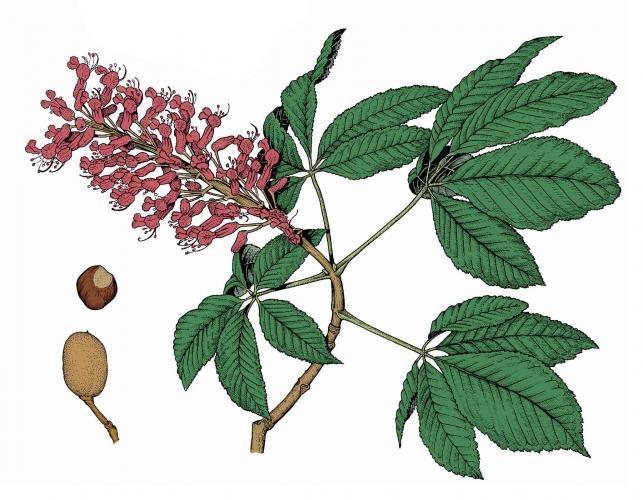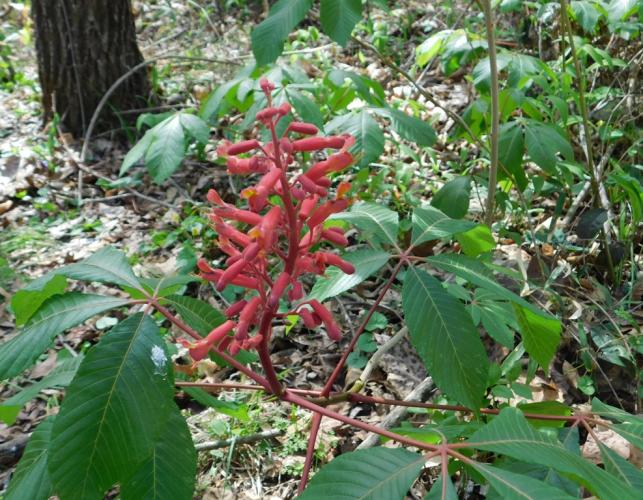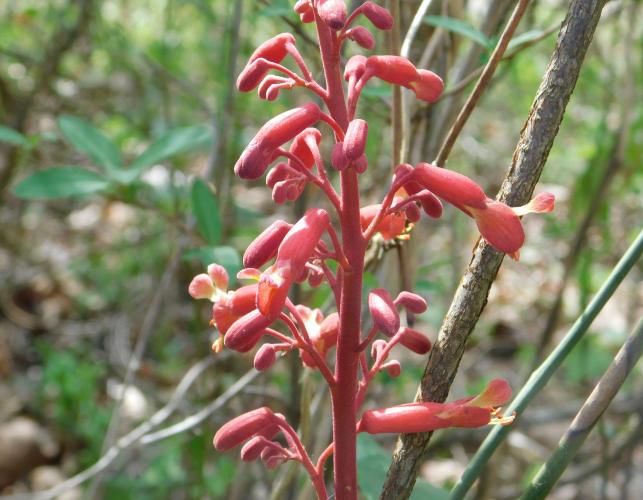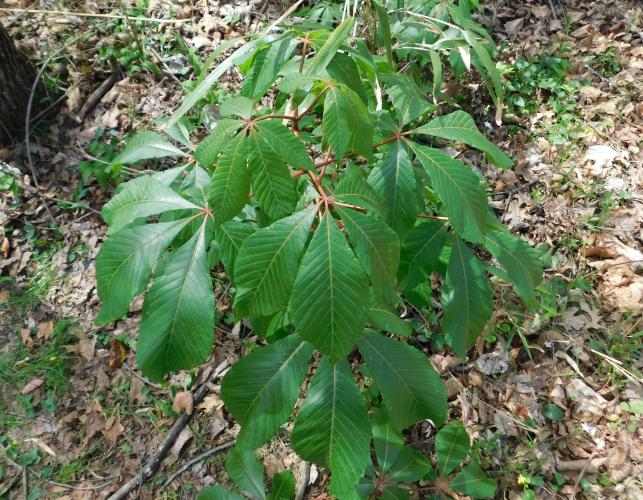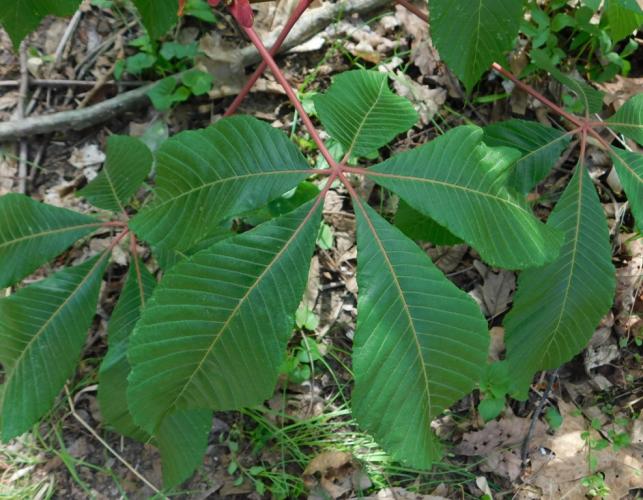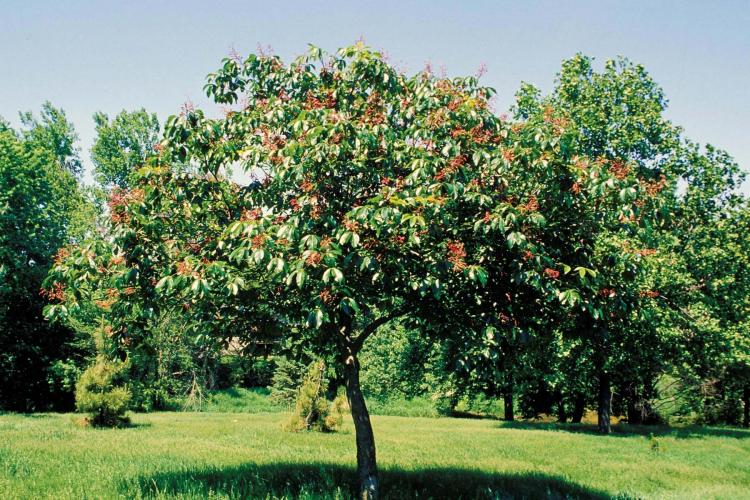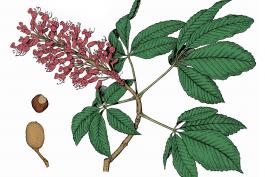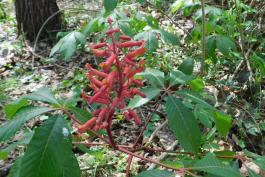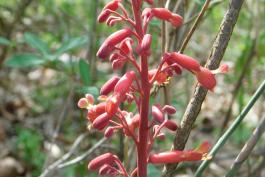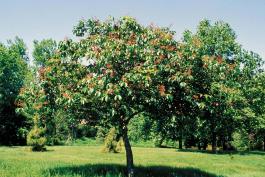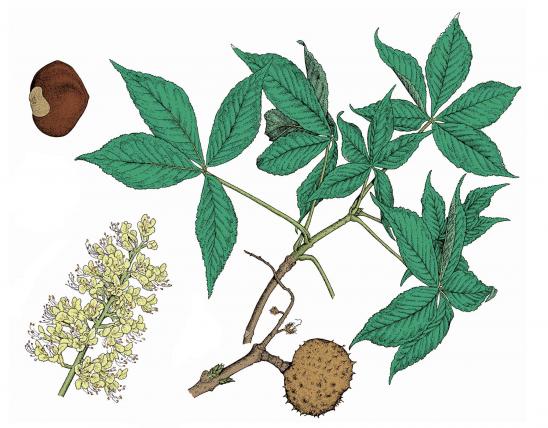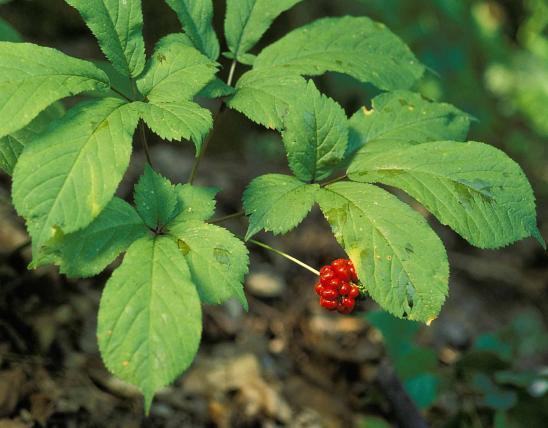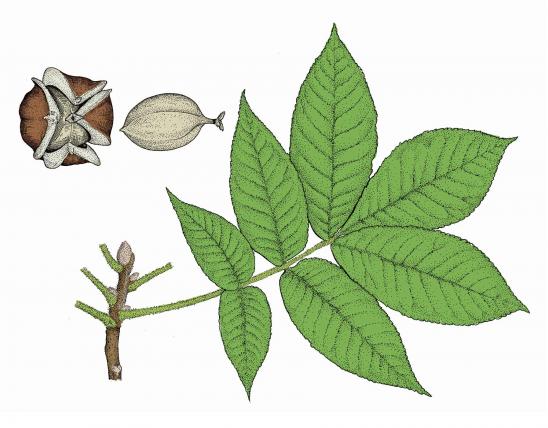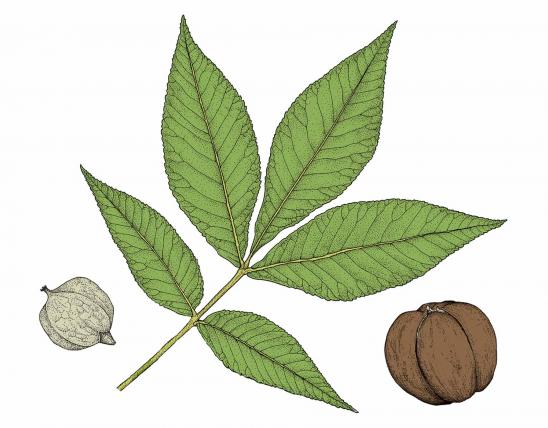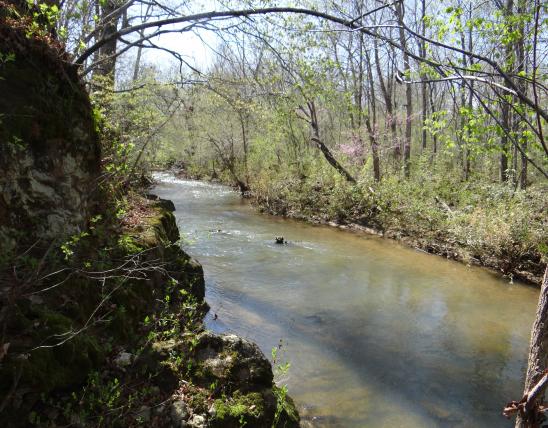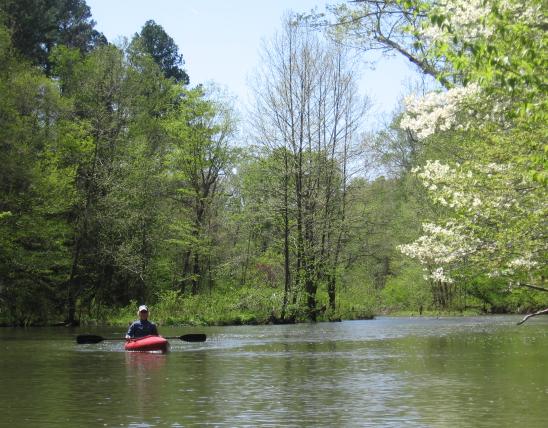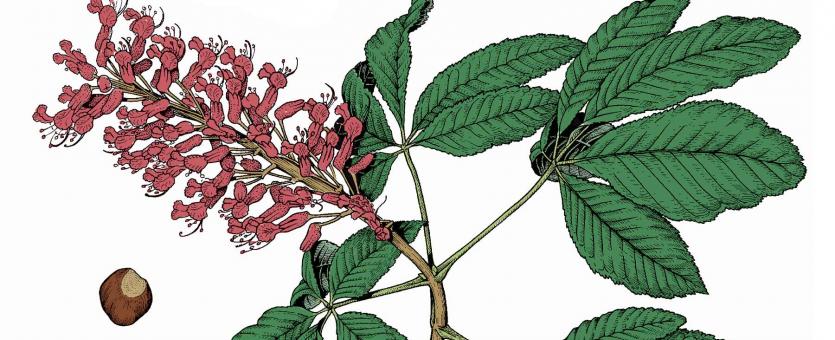
Red buckeye is a shrub or (less often) a small tree with a rather dense crown and short branches.
Leaves are opposite, palm-shaped compound with 5 leaflets; leaflets 3–6 inches long, lance-shaped or inverted egg-shaped, coarsely toothed; upper surface shiny, dark green, smooth with a few hairs on the veins; lower surface paler, ranging from smooth to having matted hairs.
Bark is smooth on young branches; on old trunks roughened into short plates that flake off in small, thin scales.
Twigs are green, gray or brown, drooping with upcurved ends.
Flowers April–June, clustered along an axis 4–8 inches long; flowers red, ¾–1½ inches long, tube-shaped with 2 upright and 2 lateral petal lobes unequal in length; stamens mostly shorter than the upper petal lobes.
Fruits September–November, 1–2 inches wide, leathery, somewhat globe- or egg-shaped, light brown, smooth, finely pitted, splitting into 3 parts; seeds 1–3, rounded or flattened by pressure against each other, shiny, light to dark brown.
Similar species: Red buckeye and Ohio buckeye are both found in Missouri. You can distinguish red buckeye by its having usually 5 leaflets (not 7), its red (not greenish-yellow) flowers, and the absence of any spines on its fruit hulls. Although both buckeyes are cultivated statewide, red buckeye grows in the wild only in our southeastern counties.
Height: to 20 feet.
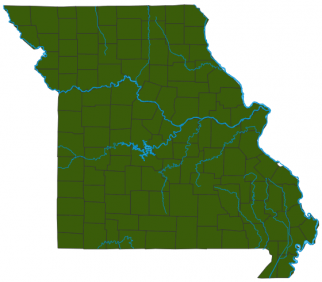
Grows natively only in southeastern Missouri; cultivated statewide.
Habitat and Conservation
Occurs in low, rich woods in valleys, at the bases of bluffs, low slopes, and along streams. It can also be found persisting in old pastures, in clearings, and along utility rights-of-way. Although it is a popular ornamental tree cultivated statewide, in the wild it is found only in southeastern Missouri.
Human Connections
This shrub, with its red flowers and umbrella-like foliage, is a popular ornamental that flowers in just a few years when grown from seed. The seeds and young foliage are poisonous to livestock. The roots contain soap-forming compounds and have been used for washing clothes.
Ecosystem Connections
As with many other red, tubular flowers, the flowers of red buckeye are frequented by hummingbirds. Although the seeds and foliage are not eaten by many animals, the shrub itself is a valuable part of low, moist ecosystems and provides cover for birds and other animals.
